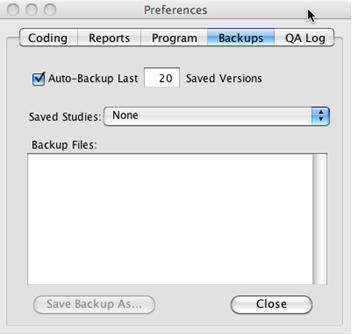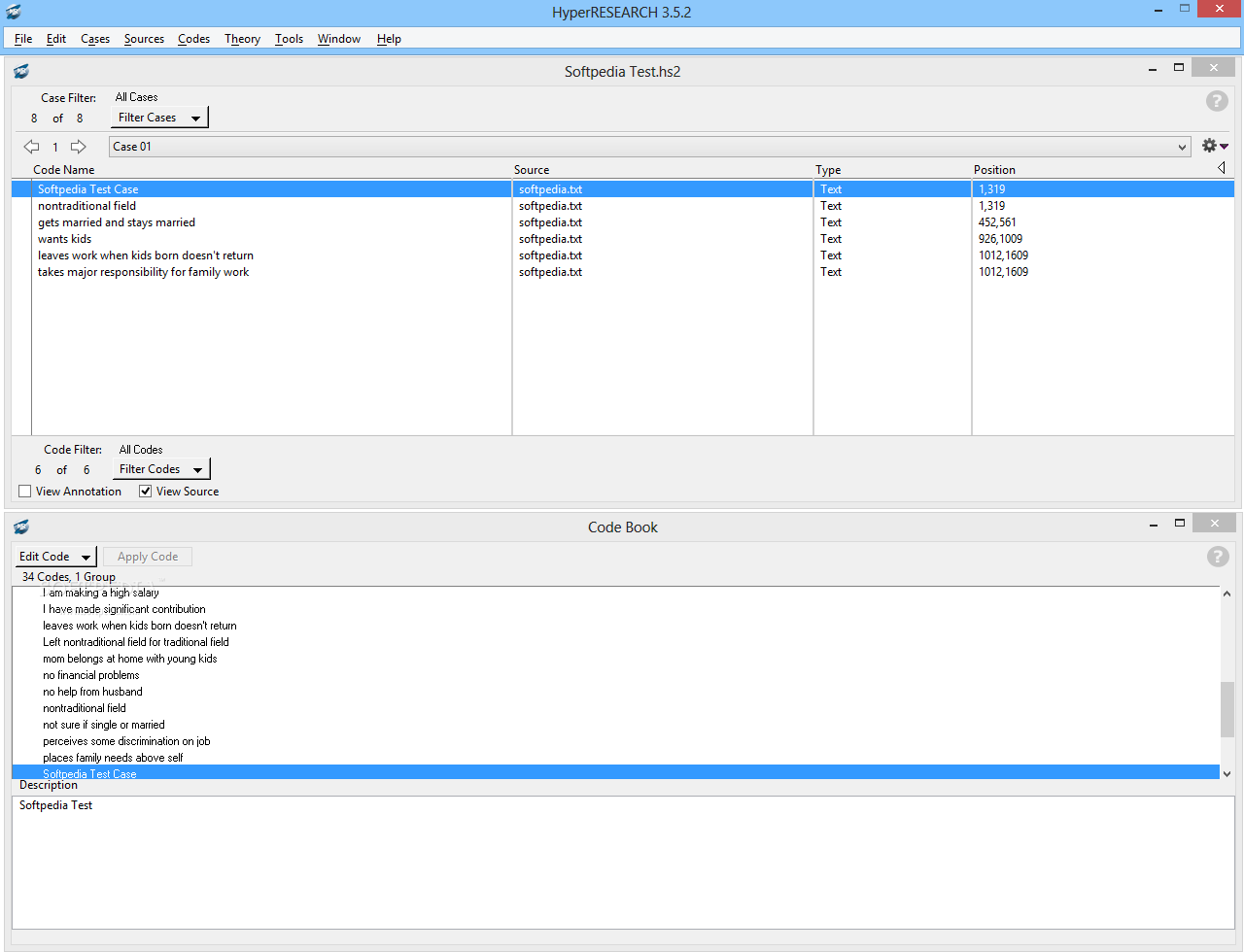

I detail how two methods of data analysis have beencombined to explore older women's (over 35yrs) accounts of early pregnancy loss– which formed the data for the author's PhD research. In this article I discussthe challenges of managing and analysing qualitative data produced fromin-depth interviews. Combining Approaches to Qualitative Data Analysis:Synthesising the Mechanical (CAQDAS) with the Thematic (A Voice-Centred RelationalApproach) (Frost,2008)Ībstract. They suggest not only that the use of appropriate softwareand hardware can help in this process but, in fact, that their use can honorthe participants' voices, retaining the original three-dimensional recordingwell past the data collection stage. In this article, the authorsintroduce a technology-enhanced data collection and analysis method based onclipped audio files. Theirchallenge is that they require the researcher to find patterns and organize thevarious themes and concepts that emerge during the analysis stage into acoherent narrative that a reader can follow. Their blessing isthat through them, researchers can collect a wealth of raw data. Qualitative researchers have long used ethnographic methodsto make sense of complex human activities and experiences.
#Hyperresearch cost software#
Microsoft Office software, including Word and Excel are adapted for research uses, or researchers use specific CAQDAS software programs, such as NVivo, Atlas T.I., HyperRESEARCH and others.Ībstract. This use of technology is described as CAQDAS, Computer Assisted Qualitative Data AnalysiS.
#Hyperresearch cost code#
Some qualitative researchers rely on software to organize, manage, and code data. Researchers often collect large quantities of data that can include visuals or media, audio files or notes from interviews, text or artifacts. Read all posts in the series, including resources by methodology, through this link: QualDataAnalysis.
#Hyperresearch cost trial#
If you do not have access to SRM, information about a free trial is listed below. In this post you will find a collection of open access articles, as well as a curated Reading List of books, chapters, articles, cases, and videos from the SAGE Research Methods library database. One topic was the use of software to aid the process. Leeper for permission to adapt and distribute this page from our site.Qualitative data analysis was a MethodSpace focus for April, 2019. This page was adapted from Choosing the Correct Statistic developed by James D. Additionally, many of these models produce estimates that are robust to violation of the assumption of normality, particularly in large samples.

These errors are unobservable, since we usually do not know the true values, but we can estimate them with residuals, the deviation of the observed values from the model-predicted values. Statistical errors are the deviations of the observed values of the dependent variable from their true or expected values. *Technically, assumptions of normality concern the errors rather than the dependent variable itself. Number of Dependent Variablesġ IV with 2 or more levels (independent groups)ġ IV with 2 levels (dependent/matched groups)ġ IV with 2 or more levels (dependent/matched groups)ġ or more interval IVs and/or 1 or more categorical IVs Necessarily the only type of test that could be used) and links showing how toĭo such tests using SAS, Stata and SPSS. Statistical tests commonly used given these types of variables (but not Variable, and whether it is normally distributed (see What is the difference between categorical, ordinal and interval variables?įor more information on this). Variable, namely whether it is an interval variable, ordinal or categorical You also want to consider the nature of your dependent Nature of your independent variables (sometimes referred to as Number of dependent variables (sometimes referred to as outcome variables), the The table belowĬovers a number of common analyses and helps you choose among them based on the Multiple ways, each of which could yield legitimate answers. We emphasize that these are general guidelines and should not beĬonstrued as hard and fast rules. The following table shows general guidelines for choosing a statisticalĪnalysis.


 0 kommentar(er)
0 kommentar(er)
